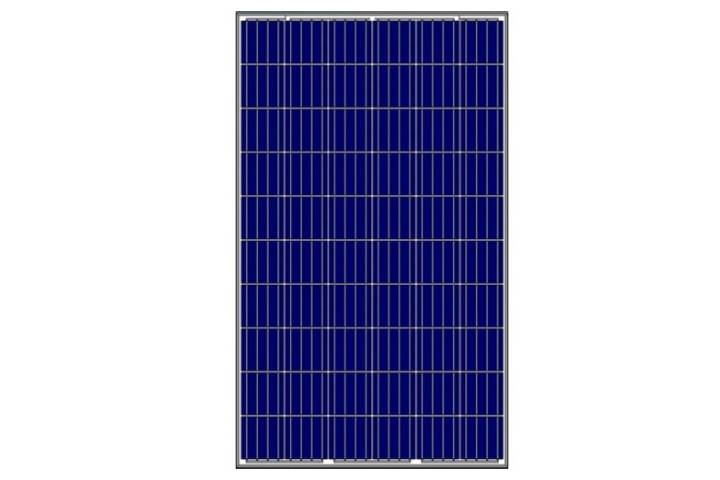About Best Solar Panels
Table of ContentsAbout Best Solar PanelsThe Facts About Best Solar Panels UncoveredHow Best Solar Panels can Save You Time, Stress, and Money.Our Best Solar Panels StatementsBest Solar Panels for DummiesBest Solar Panels for Beginners
Key takeaways There are three various kinds of solar panels: monocrystalline, polycrystalline, and also slim film (Best solar panels). Monocrystalline photovoltaic panels are extremely efficient and also have a smooth design, however come with a higher cost point than various other photovoltaic panels. Polycrystalline photovoltaic panels are less expensive than monocrystalline panels, nevertheless, they are much less reliable and also aren't as aesthetically pleasing.
Since polycrystalline cells include numerous silicon cells, the electrons can not relocate as easily and consequently, reduce the efficiency of the panel. The reduced effectiveness of polycrystalline panels also means they often tend to have a reduced power result than monocrystalline panels, typically ranging in between 240 watts as well as 300 watts.
Little Known Facts About Best Solar Panels.


The temperature coefficient informs you just how much the power result will lower by for each 1 * C over 25 * C the panel gets. The basic temperature coefficient for mono and polycrystalline panels typically falls somewhere in between -0. 3% and also -0. 5% per * C. Thin movie panels on the various other hand, are around -0.
With some thin movie panels, it's hard to even see the specific cells within the panel. They additionally have a tendency to have less wiring and busbars, indicating there's much less white area. Nevertheless, because they are so ineffective, you would require to cover your whole roofing system in thin movie panels - which might or might not be your style.
Not known Factual Statements About Best Solar Panels
But, the method monocrystalline solar cells are designed causes there to be rather a bit of white space on the panel. Some makers have functioned around this with black packing or shaping the cells differently, however these aesthetic adjustments can influence both the cost and performance helpful resources of the panels. Generally, monocrystalline panels still look smooth, but they're a little bit extra noticable than slim movie panels.
We do not recommend slim movie photovoltaic panels for domestic installations - their efficiency as well as durability don't make the low price worth it, and also it's unlikely you'll have nearly sufficient room to mount the variety of slim movie panels you would certainly require to cover your home electrical energy usage. Factors to take into consideration besides solar panel type There are 2 things we here at Solar, Reviews think are much more vital than solar PV cell type when picking panels for your residence: the brand name of photovoltaic panels as well as locating the appropriate solar installer (Best solar panels).
A solar panel system will be on your roof covering for at the very least 25 years, so you require an installer you can trust for two-plus decades!
All About Best Solar Panels
Since they are made from pure silicon, they can be readily recognized by their dark black shade. Making use of pure silicon additionally makes monocrystalline panels the most space-efficient and longest-lasting among all three photovoltaic panel kinds. This comes at an expense a great deal of silicon is thrown away to create one monocrystalline cell, sometimes reaching over 50%.
Polycrystalline solar panels As the name suggests, these originated from different silicon crystals rather of one. The silicon pieces are thawed as well as poured into a square mold. This makes polycrystalline cells a lot more economical considering that there is minimal waste, as well as provides them that characteristic square form. Nonetheless, this also makes them less efficient in regards to energy conversion and room, given that their silicon pureness and building are lower than monocrystalline panels.
Each panel does not require a frame support, making them lighter and also less complicated to set up. Unlike crystalline silicon panels that come in standardized dimensions of 60, 72, as well as 96-cell matters, thin-film panels can be available in different sizes to fit particular demands. They are less reliable than helpful site common silicon solar panels.
The Best Solar Panels Diaries
Unlike mono-and polycrystalline solar batteries, the silicon is not structured on the molecular degree. On standard, an a-Si cell requires only a fraction of the silicon needed to create typical silicon cells. This allows them to have the most affordable manufacturing cost, at the cost of performance. This is why a-Si panels are matched for applications that need really little power, such as pocket calculators.
The try this site combination of these elements leads to the highest effectiveness amongst thin-panel kinds, though still not as efficient as crystalline silicon panels. Monocrystalline panels have a performance ranking over 20%. PERC panels include an added 5% efficiency thanks to their passivation layer. Polycrystalline panels float somewhere between 15-17%. Cigarettes panels have a performance variety of 13-15%.
50 $0. 50 $0. 50 Note that these figures do not include the expense of setup and labor.
The 6-Minute Rule for Best Solar Panels
This loss of outcome is reflected with the temperature coefficient, which is a procedure of the panel's decrease in power outcome for every single 1C rise over 25C (77F). Monocrystalline as well as polycrystalline panels have a temperature coefficient in between -0. 3%/ C to -0. 5%/ C, while thin-film panels are better to -0.